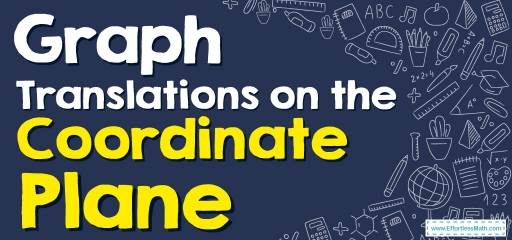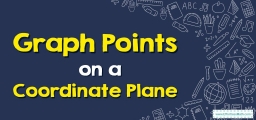How to Graph Translations on the Coordinate Plane?

Translations on the Coordinate Plane – Example 1:
Translations on the Coordinate Plane – Example 2:
Translation: \(4\) units left and \(3\) units up.
Solution:
First, write the original coordinates of the points:
\(I=(3, 0)\) \(G=(2, -4)\) \(H=(5, -2)\)
Use this coordinate notation for translating each point: \((x, y)→(x+a, y+b)\)
\(4\) units left →\(a=-4\)
\(3\) units up →\(b=3\)
Then: \(I^\prime=(-1, 3)\) \(G^\prime=(-2, -1)\) \(H^\prime=(1, 1)\)
Now, find new points on the coordinate plane and graph the new triangle by \(I^\prime, G^\prime, H^\prime\) coordinates.
Exercises for Translations on the Coordinate Plane
Graph the image of the figure using the transformation given.
1.Translation: \(5\) units right and \(2\) unit up.
2.Translation: \(3\) units left and \(5\) unit up.
Related to This Article
More math articles
- 10 Most Common 5th Grade STAAR Math Questions
- 6th Grade IAR Math Worksheets: FREE & Printable
- Top 10 TASC Math Prep Books (Our 2023 Favorite Picks)
- How to Evaluate Decimal Distances on the Map
- The Best PERT Math Worksheets: FREE & Printable
- How to Navigating Complex Scenarios: Multi-step Word Problems with Remainders
- 5th Grade M-STEP Math Worksheets: FREE & Printable
- Geometry Puzzle – Challenge 62
- 5th Grade STAAR Math FREE Sample Practice Questions
- How to Solve Two-variable Linear Equations Word Problems



















What people say about "How to Graph Translations on the Coordinate Plane? - Effortless Math: We Help Students Learn to LOVE Mathematics"?
No one replied yet.